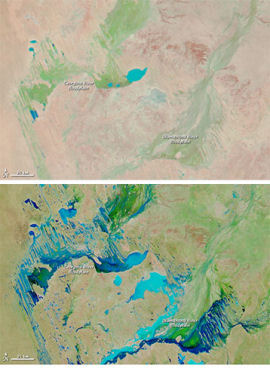
The first full climate simulation to make predictions out to the year 3000 indicates that even if zero CO2emissions were achieved immediately, the inertia of past carbon dioxide emissions would continue affecting the planet for the next 1000 years.
Appearing in the journal Nature Geoscience, the new work is based on best-case, “zero-emissions” scenarios constructed by a team of researchers from the Canadian Centre for Climate Modeling and Analysis and the University of Calgary.
“We created ‘what if’ scenarios,” says Dr. Shawn Marshall, Canada Research Chair in Climate Change and University of Calgary geography professor. “What if we completely stopped using fossil fuels and put no more CO2 in the atmosphere? How long would it then take to reverse current climate change trends and will things first become worse?”
Marshall said that the Northern Hemisphere fares better than the south in the computer simulations, with patterns of climate change reversing within the 1000-year timeframe in places like Canada. But at the same time, parts of North Africa experience desertification as land dries out by up to 30 percent, and ocean warming of up to 5& #176;C off of Antarctica is likely to trigger the total collapse of the West Antarctic ice sheet.
Marshall and his co-researchers will next begin to investigate more deeply the impact of atmosphere temperature on ocean temperature to help determine the rate at which West Antarctica could destabilize and how long it may take to fully collapse into the water.
Related:
Cloud confusion vexes global warming predictions
Is irrigation masking our warming climate?
Global warming unstoppable?
Global warming estimates “fundamentally wrong,” contends new study










Comments are closed.